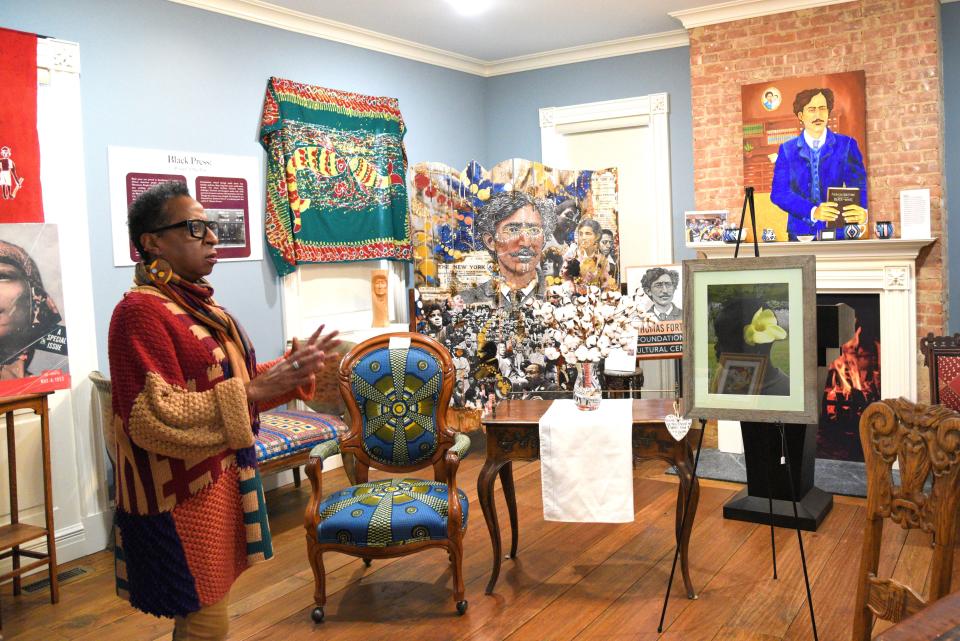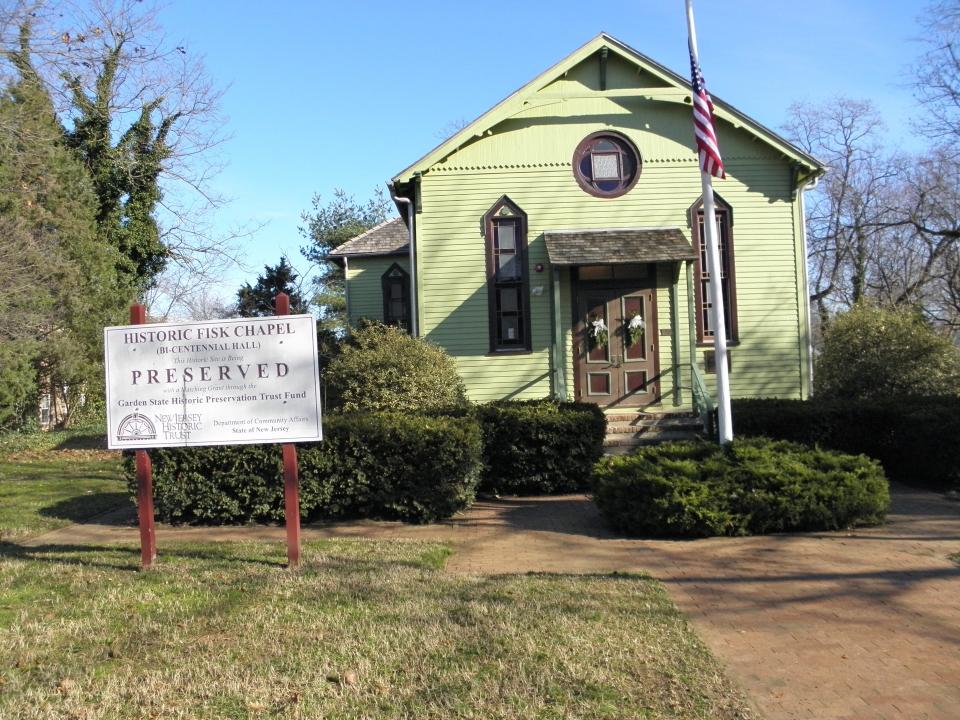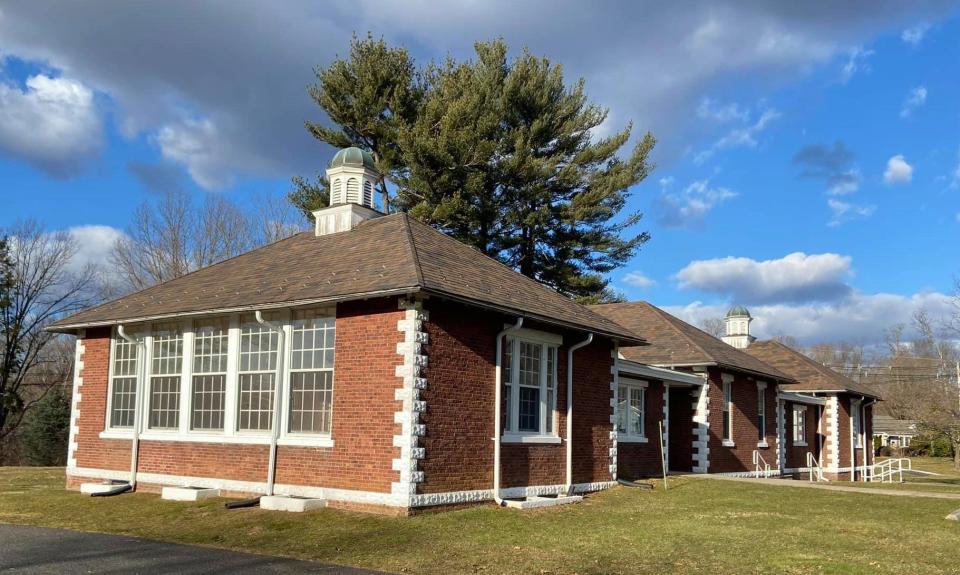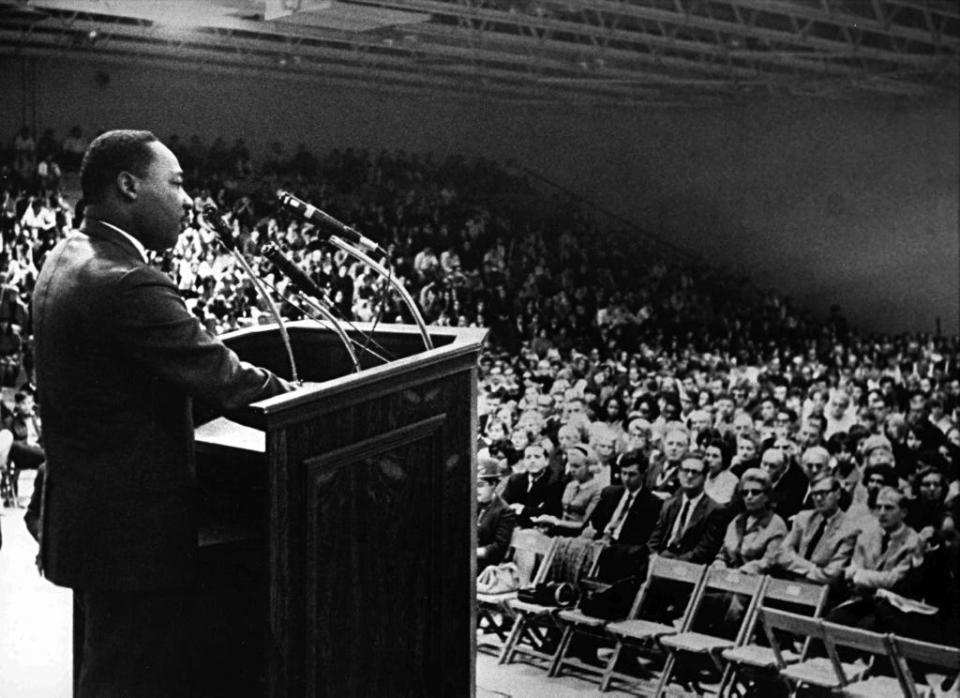13 remarkable places where you can see Black history come alive in Monmouth County
- Oops!Something went wrong.Please try again later.
From the site of a lynching to a gym where Martin Luther King Jr. spoke, Monmouth County is loaded with landmarks that tell the African American story in New Jersey.
Now there is a Monmouth County Black History Trail to spotlight them in compact yet comprehensive fashion.
The trail, just recently unveiled by local historian John Barrows in time for Black History Month, consists of 13 stops. In the vein of the famed Freedom Trail in Boston, it’s designed to be journeyed at one’s own pace, but for school groups and history tourists there is a recommended itinerary over two days.
“The reception has been surprisingly great,” said Barrows, who canvassed a dozen area historians about what stops should be included. “To be honest, I wasn’t sure anyone would care all that much.”
Following is the trail's recommended itinerary, as published by Barrows on his website www.monmouthtimeline.org.
Underground Railroad at the Shore: Secret stops start to emerge
DAY 1
Stop 1: Sandy Hook Lighthouse

Built in 1764, the oldest operating lighthouse in the country was surrounded during the American Revolution by “Refugeetown,” a tent community comprised in large part by escaped slaves and Black freedmen who aligned with the British and conducted raids in towns along the Bayshore.
Fort Hancock: How Sandy Hook base protected New York City from being bombarded
Stop 2: Marlpit Hall, Middletown
This colonial-era farmhouse, built in the 1740s, is home to the Monmouth County Historical Association’s permanent exhibit “Beneath the Floorboards: Whispers of the Enslaved at Marlpit Hall,” which humanizes the lives of seven of the slaves who were known to have resided there. Among the items displayed: a pair of 18th-century iron wrist shackles.
Listen in: NJ native shares stories of Black Americans, people of the African diaspora on podcast
Stop 3: Count Basie monument, Red Bank
Unveiled in 2000 by blues legend B.B. King, the bronze bust celebrates the Red Bank native and big band icon — the first African American to win a Grammy. It sits outside, just across from the train station (and two blocks from the Count Basie Center for the Arts).
Before he was 'The Count': Red Bank native Basie's career started in Asbury Park
Stop 4: Maple Hall, Red Bank

Now known as the T. Thomas Fortune Cultural Center, this was the home of Fortune, who was born into slavery and became an influential newspaper publisher. He entertained Booker T. Washington and other prominent African Americans here as he advocated for civil rights.
T. Thomas Fortune goes Hollywood: Namesake Red Bank center is ready
Stop 5: Fisk Chapel, Fair Haven

Now known as Bicentennial Hall, it was built as an African Methodist Episcopal Church in 1882 thanks to a $3,000 donation by Union Army general Clinton Fisk. For decades after it opened, the chapel was the site of an annual public reading of the Emancipation Proclamation. It’s on the National Register of Historic Places.
DAY 2
Stop 1: Court Street School, Freehold

First organized in 1915, this was a segregated school for African Americans until World War II, when it was used as an air raid shelter and ration station. Integrated by a court order, it reopened in 1949 as an elementary school before closing in 1974. In 1990 it became a nonprofit community center.
Stop 2: Cedar View Cemetery, Middletown
The burial ground for African Americans is the final resting place of at least 11 men who served with the U.S. Colored Troops of the Union Army during the Civil War. Omitted from municipal records and forgotten for decades, it has been cleaned up and mapped in recent years thanks to the Boy Scouts.
Stop 3: Overlook by the falls, Tinton Falls
In the 17th century, the Tinton Manor Ironworks imported 60 slaves from Barbados to work here, giving slavery its biggest foothold in New Jersey. It remained the largest pocket of slaves in New York or New Jersey for decades. A burial ground for Tinton Manor workers is in the process of being restored.
Holmdel's 'Black burial ground': A forgotten and vital part of the town's past
Stop 4: 'Mingo Jack' Memorial, Eatontown
In 1886, New Jersey’s only known lynching took place here when 66-year-old Samuel “Mingo Jack” Johnson was beaten and hanged by a mob after being accused of sexual assault by a young white woman. In later years, two white men confessed to the rape, although neither was charged. No one was held accountable for Mingo Jack’s murder, either. In 2022 a historical marker was placed at the spot of his death — the marker’s unveiling sparked the discussions that led to the Monmouth County Black History Trail.
Stop 5: Boylan Gymnasium at Monmouth University

On Oct. 6, 1966, the Rev. Martin Luther King Jr. gave a speech on “the future of integration” to students in the gym at what was then called Monmouth College in West Long Branch. He detailed the progress of the Civil Rights Movement and the perils Black people still faced in America. He also took questions from students in the audience of about 4,000.
MLK: Neptune woman helped turn Martin Luther King's birthday into a national holiday
Stop 6: Long Branch High School stadium
The Green Wave produced Sam Mills, who was inducted into the Pro Football Hall of Fame in 2022. A 1977 graduate who starred in football and wrestling, he played linebacker for the USFL champion Philadelphia Stars and later was a five-time NFL Pro Bowler with the New Orleans Saints and Carolina Panthers. His high school jersey and a mural of him are displayed at the school.
Stop 7: The Turf Club, Asbury Park
Count Basie, Billie Holiday and Clarence Clemons were among the musical greats who played this venerable establishment, which was a staple of the once-thriving commercial and cultural district on Asbury Park’s west side.
Big help: Bruce Springsteen donates $100,000 to restoration of historic Turf Club in Asbury Park
Stop 8: West Side Community Center, Asbury Park
Founded in 1942 at the former home of prominent Black doctor William Parks, this was the heartbeat of the city’s African American community before the Asbury Park riots of 1970. A historic restoration effort has been underway since 2022.
Looking for Asbury Park Black history? It's all around, and it's making a comeback
It should be noted that the trail is a work in progress.
“Nothing is etched in stone,” Barrows said. “We look forward to adding, changing or improving as we go along.”
One goal is to place a standardized historical marker at each site, noting its place on the trail.
Asbury Park Westside history: It bursts to life with mural created by local artist
“That’s absolutely something we’d like to pursue — consistent signage with a QR code that would give people some ability to learn more when they go to a place,” Barrows said.
For example, visitors to Cedar View cemetery ideally will be able to use a QR code there to find addresses for 11 other African American burial grounds if that’s a tangent they wanted to pursue. Same for Fisk Chapel and a six other historic Black churches in the county.
Witness to Appomattox: Black Civil War soldiers finally getting proper salute in Matawan
Much coordinating remains. While Barrows has been in touch with officials associated with most of the trail’s sites, he hasn’t heard back from a few. Access is an issue at Monmouth University and Long Branch High School — memorabilia associated with King’s visit and Mills are largely out of view and out of reach of the general public. Barrows also said the Count Basie Center for the Arts, which has its own statue of the musician, has expressed interest in getting involved.
“The next step is to improve the experience at a lot of the stops,” he said.
For more details on the Monmouth County Black History Trail, visit www.monmouthtimeline.org/trail/black-history-trail.
Jerry Carino is community columnist for the Asbury Park Press, focusing on the Jersey Shore’s interesting people, inspiring stories and pressing issues. Contact him at jcarino@gannettnj.com.
This article originally appeared on Asbury Park Press: Monmouth County Black History Trail offers 13 destinations

